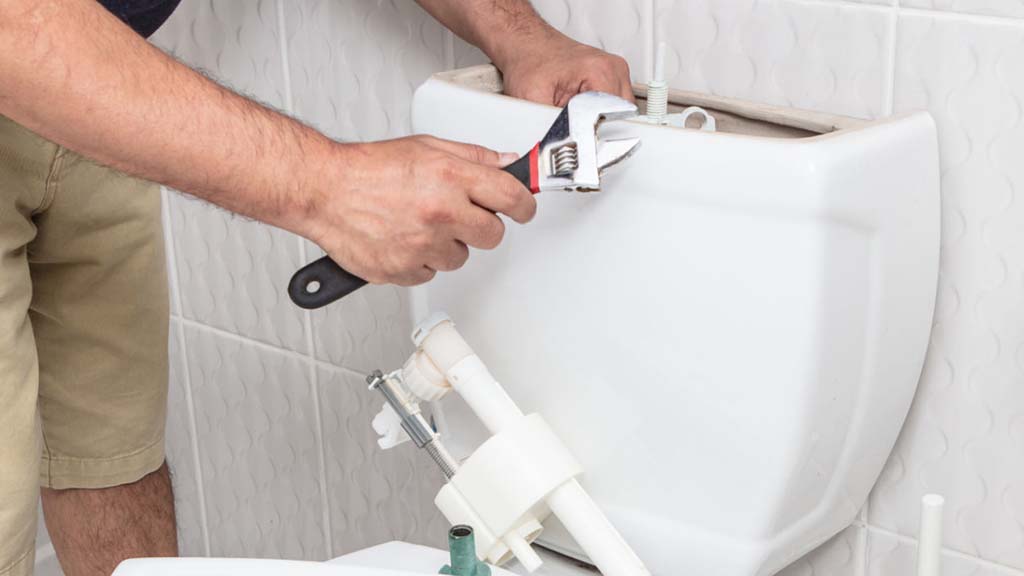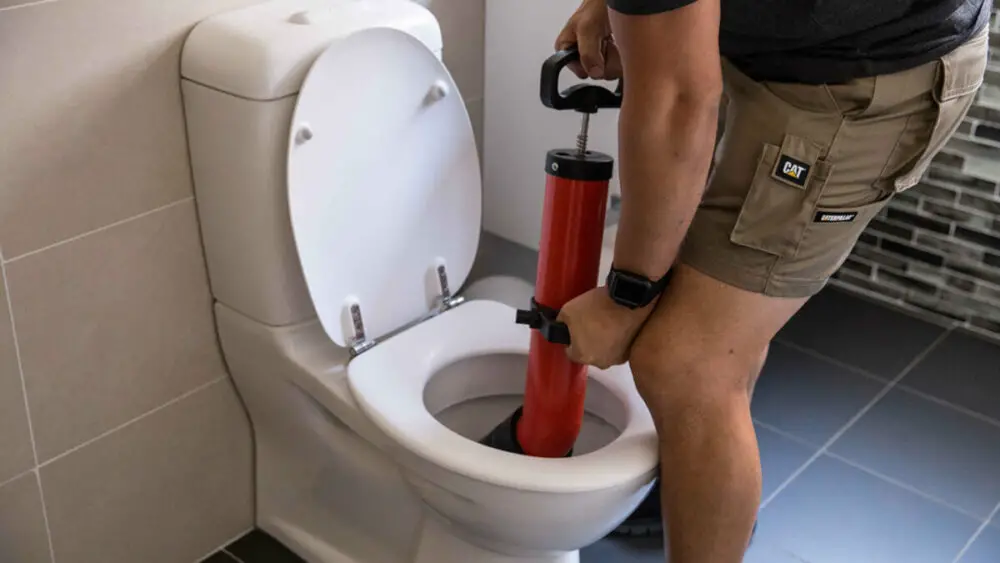Do you know how to fix a weak flushing toilet?
A weak flushing toilet can be a source of frustration and inconvenience, disrupting the smooth flow of our daily routines. Understanding the underlying causes behind this common plumbing issue is essential to effectively address the problem and restore the power of your toilet.
I aim to explore the various factors that can lead to a weak flushing toilet, shedding light on the root causes and providing insights into how to rectify them. The best part is you don’t even need to be a professional plumber for any of them!
Some Signs Of a Weak Flushing Toilet

- Incomplete Flush
One of the most common symptoms is when the toilet fails to remove waste effectively with a single flush. You may notice that the water doesn’t swirl forcefully, and not all the waste is removed from the bowl, requiring multiple flushes.
Read Also: Best Dual Flush Toilet
- Slow Drainage
Another symptom is slow drainage, where the water in the bowl takes longer than usual to drain after a flush. It may seem like the water is struggling to move through the pipes and exit the toilet bowl. This is easy to diagnose as either slow or clogged drains, but that is not always the case.
- Insufficient Water Flow
A weak flushing toilet often lacks the forceful rush of water pressure that is necessary for an efficient flush. You may notice a lack of pressure or a feeble flow when flushing, indicating that the water is not being propelled adequately.
- Water Level Problems
Fluctuations in the water level can be indicative of a weak flushing toilet. It could be that the water level in the tank is too low, resulting in an insufficient amount of water being released during a flush.
- Gurgling Sounds
If you hear gurgling or bubbling sounds from the toilet when it flushes, it could be a sign of an underlying issue. These sounds indicate that there might be a partial blockage in the drain or vent system, causing the water to struggle to flow properly.
- Continuously Running Toilet
In some cases, a weak flushing toilet may have a persistent issue with water continuously running into the bowl or tank. This indicates a malfunctioning flush valve or a faulty flapper, preventing a proper seal and leading to water wastage.
- Low Water Level
One of the primary and common plumbing problems behind a weak flushing toilet is a low water level in the tank. Insufficient water in the tank reduces the force and effectiveness of the flush. This can occur due to a problem with the fill valve or float mechanism, which regulates the water level.
Check these components and adjust them accordingly to ensure the water level is at the recommended height for optimal flushing performance.
Possible Solutions Available
A crucial step in troubleshooting a weak flushing toilet is to check the water level inside the tank. Ideally, the water level should be approximately one inch below the overflow tube. If it’s too low, adjust the float mechanism or fill valve to increase the water level.
However, if the water level is too high, it might result in continuous running or overflowing. In such cases, consider adjusting the float mechanism or the fill valve to lower the water level.
Mineral Buildup and Clogs
Over time, mineral deposits can accumulate in the toilet’s rim jets and siphon jets, impeding the flow of water during a flush.
Additionally, clogs caused by debris, hard water deposits, or foreign objects can restrict water flow and hinder the flushing power.
Regular maintenance and cleaning of these critical components can help prevent such buildups and ensure efficient flushing.
How To Fix A Weak Flushing Toilet?

Mineral deposits and debris can accumulate around the rim jets, hindering the flow of water during a flush. To address this, you can use a stiff wire brush or a small mirror to locate and clear any obstructions.
Gently scrub the rim jets, clearing debris and removing the buildup, allowing water to flow freely and enhance the flushing power.
Another possible cause of weak flushing is clogged siphon jets. These are located at the bottom of the toilet bowl and play a vital role in creating the necessary suction for an effective flush.
To clean the siphon jets, first, turn off the water supply to the toilet. Use a small mirror to locate the jets, and then insert a thin, flexible wire or a small brush to dislodge any blockages. Flushing water through the jets afterward will help clear away loosened debris. [1]
Worn-out flush or Flapper valve
The flapper is a rubber valve located at the bottom of the toilet tank. It controls the release of water from the tank into the bowl during a flush. If the flapper is worn out or damaged, it may not create a proper seal, leading to water leakage and a weak flush. Inspect the flapper regularly and replace it if necessary to maintain a strong flushing mechanism.
Plumbing leaks from more places than you think
A malfunctioning flapper or flush valve can significantly impact the flushing power of your toilet. If the flapper is worn out, it may not create a proper seal, resulting in water leaking from the tank into the toilet bowl.
Replace the flapper with a new one if necessary. Similarly, if the flush valve is damaged or obstructed, it can impede the water flow during a flush. Inspect the flush valve for any signs of damage or debris and clean or replace it as needed.
Low Pressure
Insufficient water pressure can contribute to a weak flush. Low pressure in the water supply line to the toilet can hinder the force with which water enters the bowl during a flush.
A low-pressure toilet flush can be a frustrating experience, as it often results in incomplete waste removal and a weaker flush overall. pressure problems.
How to fix it?
In order to rectify this issue, it is best practice to Ensure that the water supply to your toilet is fully open and that there are no obstructions or leaks in the water line. If you suspect low water pressure in your home, this may be the place to look
Inadequate Ventilation
Proper ventilation is crucial for the optimal functioning of your toilet’s plumbing system. If the vent pipes that allow air to enter the drain system become clogged or blocked, it can create a vacuum effect and impede the flushing power. A qualified plumber can inspect and clear any blockages in the vent pipes to ensure unrestricted airflow and restore the flushing efficiency.
Clogged Toilet or Poor Ventilation?

To fix inadequate toilet ventilation, it is essential to address any blockages or obstructions in the vent pipes. It is important to inspect the venting system and identify the source of the problem.
They may use specialised tools such as snakes or cameras to clear any clogs or debris that are obstructing the airflow.
In some cases, the vent pipes may need to be repaired or replaced to ensure proper ventilation. It is crucial to have a well-ventilated toilet to maintain optimal flushing performance and prevent any unpleasant odours or drainage issues. [1]
Always running toilet
A running toilet is a frustrating and inconvenient plumbing issue that occurs when water continuously flows into the toilet tank even after a flush. The sound of water running non-stop can be both irritating and wasteful, leading to an increased water bill and potential water damage. It disrupts the peaceful ambiance of the bathroom and can even disturb sleep when it happens at night.
Reduce your water bill, and restore your water pressure!
To fix a running toilet, there are a few steps you can take. First, remove the tank lid and check the flapper valve. If the flapper is worn out or doesn’t create a proper seal, it may need to be replaced.
Adjusting the float arm or replacing the fill valve can help regulate the water level and stop the continuous flow.
If there is sediment or debris obstructing the fill valve or flush valve, cleaning them can improve their functionality. Additionally, ensure that the chain connecting the flapper to the flush lever is properly adjusted and not too taut or too loose.
Read Also: Worms in Toilet
Small Plumbing Repairs Make All The Difference
Not every issue is going to be as catastrophic as a sewer line rupture or a main water line break, but they all make a difference in the home. Repairing a clogged drain leaky faucet, or a weak flushing toilet can all add to the overall feel of a home.
So If you are looking to finally fix those forever-running toilets, and restore the flushing power of your toilets, this article should have given you every place you need to look!
Related: How To Unclog Toilet When Nothing Works

Michael Davis is a heating & plumbing expert who currently works as independent contractor in SC. He also writes for Plumbertip.
For almost 10 years he worked on various plumbing tasks across South Carolina.


